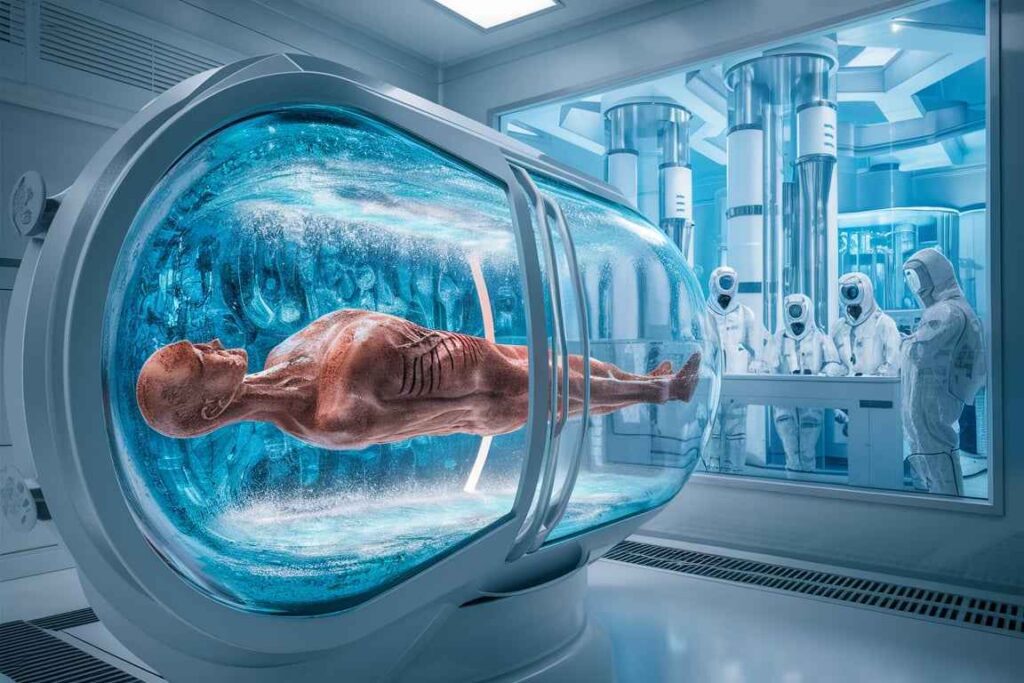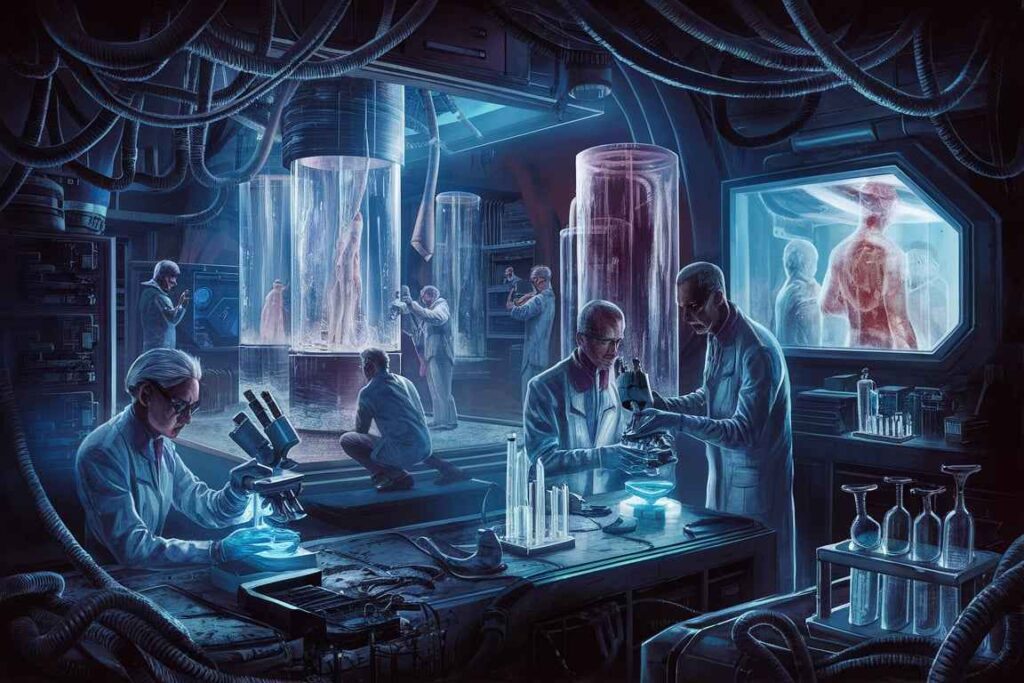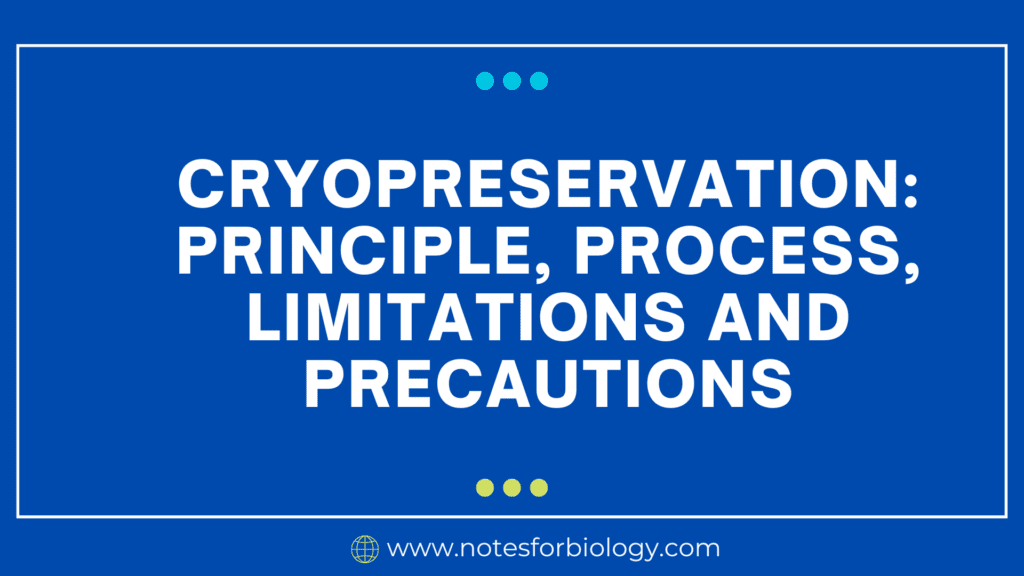Cryopreservation is a powerful technique that plays a critical role in various scientific and medical fields. Many opportunities for study, medicine, agriculture, and conservation are made possible by its capacity to stop biological processes and preserve cells, tissues, and organs for lengthy periods of time. On the other hand, knowing and perfecting the underlying concepts, procedures, and safety measures is crucial for cryopreservation to be successful. Future developments will see cryopreservation’s uses grow and results improve as its limits are addressed and methodologies are improved.
Table of Contents
Cryopreservation
Cryopreservation is a process used to preserve cells, tissues, organs, or any other biological constructs by cooling the samples to very low temperatures. At such temperatures, any biological activity, including the biochemical reactions that lead to cell death and degradation, is effectively stopped. This technique has significant applications in various fields such as medicine, agriculture, and biodiversity conservation.

Principle of Cryopreservation
The basic idea of cryopreservation is to cool biological material below absolute zero, which stops all cellular metabolic activity. The vitrification of the cells is the key idea here. The process of vitrification involves transforming a liquid into a solid that resembles glass and lacks any crystalline structure. Ice crystal formation within cells is reduced or prevented entirely when cryoprotective agents (CPAs) are present and cells are chilled quickly. When ice crystals defrost, they can seriously harm the cellular structure mechanically, which can result in cell death.
Agents Cryoprotective (CPAs): These are materials that shield biological tissue from the damaging effects of freezing. CPAs reduce the quantity of ice that accumulates after freezing by raising the concentration of the solute in the cell. Ethylene glycol, dimethyl sulfoxide (DMSO), and glycerol are examples of common CPAs.
Process of Cryopreservation

Cryopreservation can be broken down into the following essential steps:
1. Getting Biological Material Ready:
- Choosing the right biological material, such as organs, tissues, or cells.
- Collecting and cultivating cells as needed.
2. Cryoprotective Agents (CPAs):
- To prevent ice formation, CPAs are added to the biological substance.
- To balance protection against toxicity, the concentration of CPAs needs to be carefully regulated.
3. Cooling:
Controlled rate freezing: In order to avoid the production of ice crystals, the sample is cooled at a controlled rate, typically between -1°C and -3°C per minute.
Vitrification: To avoid ice formation, the sample is rapidly chilled at extremely fast rates.
4. Storage:
The biological material is kept in either vapor-phase nitrogen (which is kept at a temperature of about -150°C) or liquid nitrogen (which is kept at about -196°C).
5. Thawing:
- Warming quickly to prevent ice crystals from forming during the warming phase.
- CPAs are eliminated by washing to prevent toxicity.
Limitations of Cryopreservation
Cryopreservation has a number of drawbacks despite its many benefits:
Hazards of Cryoprotectants:
At large quantities, CPAs can be harmful to cells. Optimization is necessary to strike a precise balance between toxicity and successful cryoprotection.

Ice Crystal Formation:
Ice crystals can form as a result of insufficient warming or chilling, which can seriously harm tissues and cells.
Osmotic Stress:
Osmotic stress brought on by the introduction and removal of CPAs might result in cell deterioration or death.
Possibility and Operationality:
It is not possible to successfully cryopreserve every type of cell or tissue. After thawing, some cells might no longer be viable or functional.
Conditions of Storage:
Stable temperature maintenance at ultra-low temperatures necessitates sophisticated equipment and ongoing observation.
The Price and Complexity:
The procedure is frequently expensive and calls for skilled workers and specific equipment.
Precautions in Cryopreservation
A number of safety measures need to be followed in order to maximize cryopreservation success and limit damage:
Enhancement of Cryoprotective Substances:
For every type of cell or tissue, the kind and concentration of CPAs should be tuned.
It is important to establish the right equilibration times in order to reduce osmotic shock.
Regulated Cooling Speeds:
To attain the best possible cooling rates for various biological materials, use controlled rate freezers.
Steer clear of abrupt temperature swings that can lead to thermal stress.
Methods of Vitrification:
To accomplish vitrification, use extremely quick cooling methods, especially for cells and embryos.
Reduce the sample’s volume in order to speed up cooling.
Appropriate Storage Environment:
Make sure liquid nitrogen is continuously supplied and its levels are monitored.
If equipment fails, use backup methods to keep temperatures extremely low.
Quick Thawing:
Samples should be rapidly thawed to prevent ice from recrystallizing.
After thawing, use the proper buffers to efficiently and rapidly remove CPAs.
Cut Down on Contamination:
To avoid microbiological contamination, use aseptic environments and sterile procedures.
Ensure that storage areas are kept clean and under regular observation.
After-Thaw Evaluation:
After the cells have thawed, check their viability and functionality to make sure the preservation procedure was successful.
Optimize recovery procedures in accordance with the particular requirements of the biological material.
The Use of Cryopreservation
Applications for cryopreservation are numerous and span many different industries:
Medical:
preservation of stem cells for use in regenerative medicine and transplantation.
preservation of embryos, sperm, eggs, and blood components for use in reproductive medicine.
preservation of tissues for transplantation and grafting.
Investigation:
long-term cell line storage for investigations in science.
preservation of genetically varied samples and genetically modified organisms (GMOs) for research purposes.
Farming:
conservation of pollen and seeds as well as other plant genetic resources.
genetic material from animals is stored for use in breeding and conservation.
Biology of Conservation:
genetic material of endangered species preserved for use in upcoming restoration projects.
samples of biodiversity kept for use in environmental and ecological research.
Food Sector:
Probiotics and starter cultures are preserved for use in fermentation operations.
preservation of plant and animal cells for use in biotechnology and food production.
Frequently Asked Question
What is Cryopreservation ?
Cryopreservation is a process used to preserve cells, tissues, organs, or any other biological constructs by cooling the samples to very low temperatures. At such temperatures, any biological activity, including the biochemical reactions that lead to cell death and degradation, is effectively stopped.
What are the Process of Cryopreservation ?
The Process of Cryopreservation are
1. Getting Biological Material Ready
2. Cryoprotective Agents (CPAs)
3. Cooling
4. Storage
5. Thawing
Related Article

